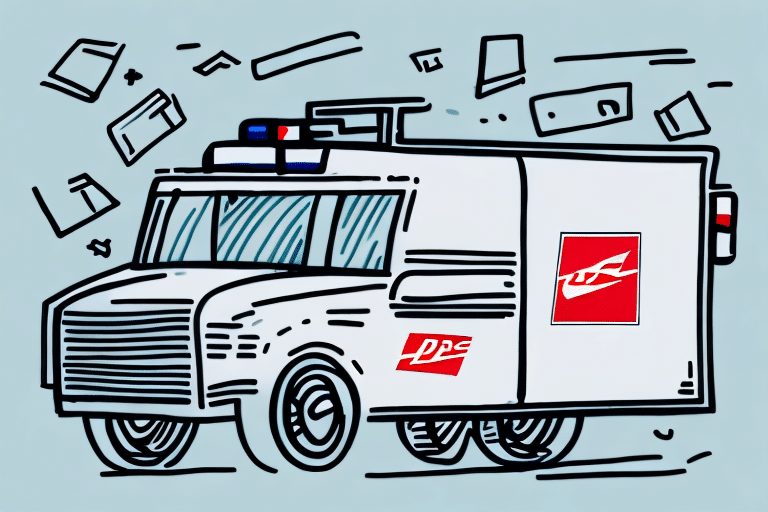What Is USPS Insurance?
If you frequently ship packages with the United States Postal Service (USPS), understanding USPS insurance is crucial. USPS insurance is a protection plan you can purchase to cover the value of your package in case it is lost or damaged during transit. In such events, USPS insurance provides monetary compensation based on the declared value of your package.
How USPS Insurance Works
When you purchase USPS insurance, you declare the value of the items you're shipping. This declared value determines the level of protection and compensation you receive if something goes wrong. USPS insurance is available for various mail services, including Priority Mail, First-Class Package Service, and Priority Mail Express.
Purchasing Insurance
You can purchase USPS insurance either online through USPS.com or at your local post office. The cost of insurance is based on the declared value of your package.
Tracking and Claims
After purchasing insurance, you'll receive a shipping label with a barcode and a unique identification number. This number is essential for tracking your package and filing a claim if necessary. If your package is lost or damaged, you can submit a claim online or in person, providing necessary documentation such as proof of value or photos of the damaged items.
Benefits of USPS Insurance
USPS insurance offers several advantages:
- Peace of Mind: Protects against potential losses from lost or damaged packages.
- Affordability: Often more affordable than private insurance options.
- Ease of Claims: Simple process for filing claims online or at post offices.
- Wide Coverage: Covers a variety of items, including electronics, jewelry, and artwork.
Types of USPS Insurance Coverage
USPS offers different levels of insurance coverage depending on the mail service you choose:
- Priority Mail Express: Up to $5,000
- Priority Mail: Up to $5,000
- First-Class Mail: Up to $5,000
- International Mail: Up to $2,499.99 for certain countries and up to $5,000 for others
Note that USPS insurance does not cover items such as perishable goods, hazardous materials, or collectibles. Additionally, oversized or overweight packages may require alternative shipping methods or private insurance.
Cost of USPS Insurance
The cost of USPS insurance is determined by the declared value of your package and the type of mail service used. For example:
- Minimum Cost: $1.65
- Maximum Coverage: Ranges from $100 to $5,000 depending on the mail service
It's important to accurately declare the value of your shipment to ensure adequate coverage without incurring unnecessary fees.
Filing a USPS Insurance Claim
Claim Submission
If your package is lost or damaged, you can file a claim online at USPS.com or in person at your local post office. Ensure you provide all required documentation, including proof of value and evidence of loss or damage.
Claim Review and Compensation
USPS will review your claim and, if approved, provide compensation up to the declared value of your package. Keep in mind that indirect damages, such as lost profits, are not covered.
Common Reasons for Denied Claims
- Insufficient packaging or improper handling
- Incomplete or inadequate documentation
- Incorrect addressing or delivery to the wrong address
- Shipping prohibited or restricted items
To increase the likelihood of a successful claim, ensure your package is properly packaged, accurately declared, and complies with all USPS guidelines.
Maximizing Your USPS Insurance Coverage
To make the most of USPS insurance, consider the following tips:
- Proper Packaging: Use sturdy materials to protect your items.
- Accurate Declaration: Clearly declare the value of your shipment.
- Documentation: Keep receipts and take photos of high-value items.
- Track Your Shipment: Use a trackable shipping method to monitor your package.
Understanding the limitations and exclusions of USPS insurance is also essential. Certain items, such as cash, jewelry, and perishable goods, may not be fully covered. Always review the USPS Insurance Policy for detailed information.
Alternatives to USPS Insurance
If USPS insurance doesn't meet your needs, several alternatives are available:
- Private Shipping Insurance: Companies like Insure4Ship offer tailored insurance options for various shipping needs.
- Carrier-Specific Insurance: Other carriers such as UPS and FedEx provide their own insurance plans with different coverage levels.
- Third-Party Insurers: Specialized insurers offer comprehensive coverage for high-value or unique items.
When choosing an alternative, compare coverage options, costs, and claim processes to find the best fit for your shipping requirements.
Conclusion
USPS insurance is a valuable tool for protecting your shipments, especially when sending high-value or sentimental items. By understanding how it works, the types of coverage available, and how to effectively use and file claims, you can ensure your packages are safeguarded during transit. Whether you choose USPS insurance or an alternative option, securing your shipments helps build trust and reliability in your shipping practices.




















